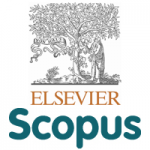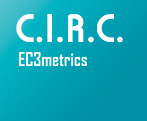The bed in images of the Annunciation of the 14th and 15th centuries: a dogmatic symbol according to Greek-Eastern Patrology / El lecho en imágenes de la Anunciación de los siglos XIV y XV: un símbolo dogmático según la Patrología greco-oriental
Resumen
ABSTRACT: The purpose of this article is to interpret the deep doctrinal meanings underlying the bed that appear in the symbolic depiction of some images of the Annunciation of the 14th and 15th centuries. To do so, I adopt two complementary methodological strategies, based on comparative analysis. In essence, from the outset I analyze an abundant corpus of explanatory texts by Fathers of the Greek-Eastern Church when they interpret some quotations from the Old Testament that include metaphorical terms such as thalamus, Sponsus, and Sponsa; second, I analyze twelve images from the Annunciation of the period that include a bed. Based on the fact that these Greek-Eastern Fathers unanimously consider that these metaphorical expressions signify the dogmas of the human incarnation of God the Son in the womb of the Virgin, and, as a consequence, also the divine virginal motherhood of Mary, I conclude that the bed included in these Annunciations is an eloquent visual symbol or metaphor for both dogmas.
KEYWORDS
Christian Iconography, Medieval Art, Annunciation, Christ’s Incarnation, Virginal Divine Motherhood.
RESUMEN: Este artículo tiene el propósito de interpretar los profundos significados doctrinales subyacentes en el lecho que aparece en la escenografía de algunas imágenes de la Anunciación de los siglos XIV y XV. Para ello adoptamos dos estrategias metodológicas complementarias, basadas en análisis comparativos: de entrada analizamos un abundante corpus de textos exegéticos de Padres de la Iglesia Greco-oriental cuando interpretan algunos textos del Antiguo Testamento que incluyen términos metafóricos tales como thalamus, Sponsus y Sponsa; en segundo lugar, analizamos doce imágenes de la Anunciación del período que incluyen un lecho. Basándonos en el hecho de que dichos Padres greco-orientales consideran unánimemente que esas expresiones metafóricas significan los dogmas de la encarnación humana de Dios Hijo en el vientre de la Virgen, y, como consecuencia, también la virginal maternidad divina de María, concluimos que el lecho incluido en esas Anunciaciones es un elocuente símbolo o metáfora visual de ambos dogmas.
Palabras clave
Texto completo:
PDFEnlaces refback
- No hay ningún enlace refback.
URL: http://ojs.uv.es/index.php/IMAGO
Administración: C/ Universitat, 2 · 46003 Valencia.
M.Elvira.Mocholi@uv.es, Elena.Monzon@uv.es, mahiques@uv.es
ISSN digital: 2254-9633 / ISSN impresión: 2171-0147
MÉTRICA EN SJR BASADA EN SCOPUS
INDEXACIÓN






![]()







